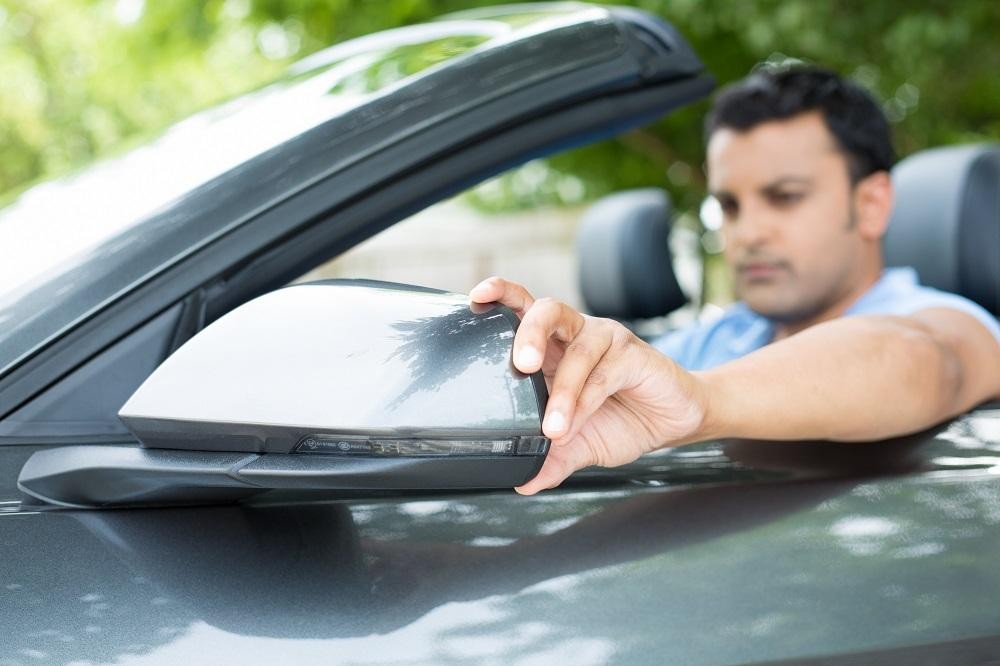Being a safe and responsible driver means understanding all aspects of vehicle operation and road awareness. A critical element of this is knowing and mitigating car blind spots. These areas around your vehicle, hidden from your direct line of sight, can pose significant dangers if not properly managed. This article from cars.edu.vn, your trusted source for automotive expertise, will delve into exactly Where Is The Blind Spot In A Car, why it matters, and how you can enhance your safety by understanding and addressing them.
Understanding Car Blind Spots: Definition and Causes
So, where is the blind spot in a car exactly? A blind spot is defined as an area surrounding your vehicle that is not directly visible in your normal field of vision while driving. This includes what you see straight ahead, in your peripheral vision, and in your rearview and side mirrors under typical adjustment.
Several factors contribute to creating these obscured zones around your vehicle:
- Vehicle Pillars: The A-pillars (windshield pillars), B-pillars (between front and rear doors in some vehicles), and C-pillars (rear pillars) are structural supports of your car. These pillars, while crucial for vehicle integrity, can obstruct a driver’s view, creating significant blind spots, particularly at intersections and during lane changes.
- Mirrors and Reflection Limitations: While mirrors are designed to expand your field of vision, they cannot eliminate all blind spots. Standard flat mirrors offer a realistic image but a limited field of view. Even convex side mirrors, designed to widen the view, can distort distances and still leave areas unseen. The interior rearview mirror’s effectiveness is also limited by the size and shape of the rear window and any obstructions within the vehicle.
- Obstructions Inside the Vehicle: Objects within your car can also create or worsen blind spots. High cargo in the trunk or back seats, tall headrests, and even passengers can block your rearward or side vision, expanding the areas where you cannot directly see.
 Driver adjusting side view mirror to minimize car blind spots, ensuring safe lane changes and awareness of surrounding traffic.
Driver adjusting side view mirror to minimize car blind spots, ensuring safe lane changes and awareness of surrounding traffic.
The Danger of Blind Spots: Why Awareness is Key
Blind spots are not just minor annoyances; they are genuine safety hazards. Their danger stems from the fact that they conceal objects – be it other vehicles, motorcycles, cyclists, pedestrians, or road obstacles – directly in areas where collisions are likely to occur during lane changes, turns, or merging.
Relying solely on mirrors without actively checking blind spots can lead to:
- Sideswipe collisions: When changing lanes, a vehicle hidden in your blind spot might be alongside you, leading to a dangerous sideswipe accident.
- Accidents with vulnerable road users: Cyclists and pedestrians are smaller and can easily disappear into blind spots, especially in urban environments. Failure to check blind spots before turning or maneuvering can result in tragic accidents.
- Merging and highway entry collisions: When merging onto a highway or merging lanes, vehicles in your blind spot can be overlooked, causing collisions and traffic disruptions.
Effective Strategies to Minimize Car Blind Spots
While blind spots cannot be entirely eliminated, drivers can employ several techniques to significantly reduce their impact and enhance road safety:
1. Optimal Mirror Adjustment: Expanding Your Field of View
Properly adjusting your car mirrors is the first and most crucial step in minimizing blind spots. Here’s how to optimize your mirror setup:
- Rearview Mirror: Adjust this mirror first to provide a clear, panoramic view directly behind your vehicle. It should frame the entire rear window.
- Driver’s Side Mirror: Lean your head towards the driver’s side window and adjust the mirror outwards until you can just barely see the side of your car in the inner edge of the mirror.
- Passenger’s Side Mirror: Lean your head towards the center of the car and adjust the passenger side mirror outwards until you can also just barely see the side of your car in the inner edge of the mirror.
This “outward adjustment” technique aims to minimize overlap between your mirrors and direct vision, thus reducing the size of blind spot areas directly to your sides. Remember to also adjust the vertical angle of your mirrors to focus on the road and traffic, not the sky or ground.
2. The Essential Shoulder Check: Verifying the Blind Spot
Even with perfectly adjusted mirrors, a quick shoulder check is indispensable before making lane changes or turns. This simple action involves physically turning your head to briefly glance over your shoulder towards the direction you intend to move. This direct visual check confirms whether the blind spot is clear of any obstacles that mirrors might have missed.
3. Leveraging Blind Spot Monitoring Systems: Technology as an Aid
Many newer vehicles are equipped with Blind Spot Monitoring Systems (BSM). These systems use sensors to detect vehicles in your blind spots and alert you through visual or auditory warnings. While these systems are helpful, they should be seen as an aid, not a replacement for diligent mirror checks and shoulder checks. Technology can fail, and over-reliance can lead to complacency.
Conclusion: Proactive Blind Spot Management for Safer Driving
Understanding where is the blind spot in a car and actively managing it is a cornerstone of defensive and safe driving. By correctly adjusting your mirrors, consistently performing shoulder checks, and utilizing available technology responsibly, you can significantly reduce the risks associated with blind spots. Prioritizing blind spot awareness is not just about improving your driving skills; it’s about contributing to a safer road environment for everyone. For more detailed information on blind spot safety, refer to resources from organizations like the National Highway Traffic Safety Administration (NHTSA) at https://www.nhtsa.gov/sites/nhtsa.gov/files/blindzoneglaremirrormethod.pdf.